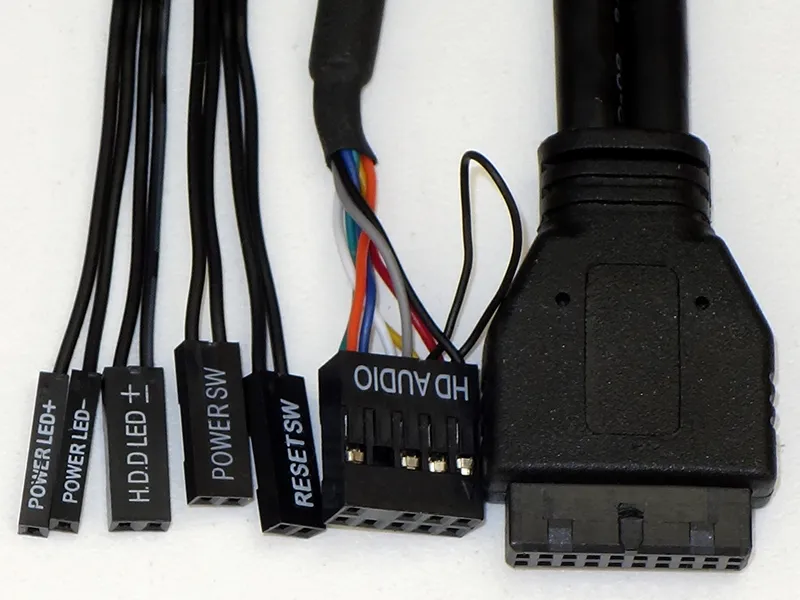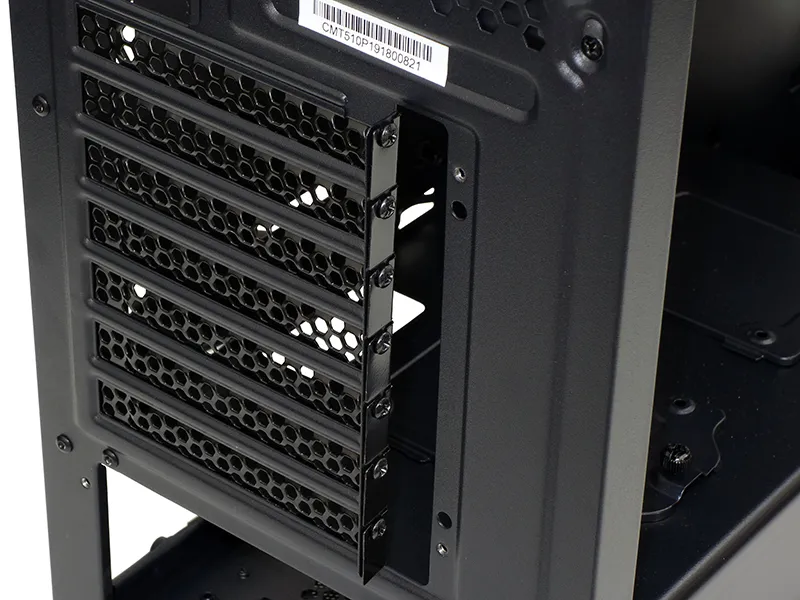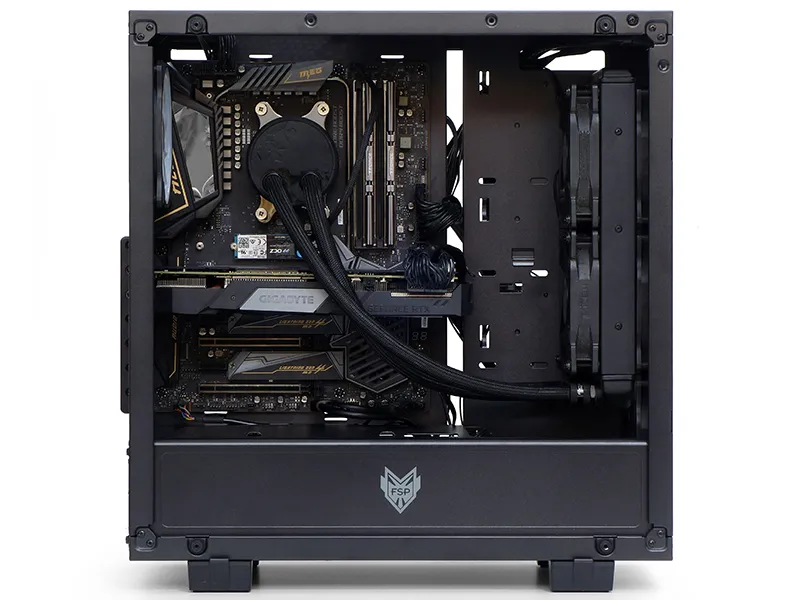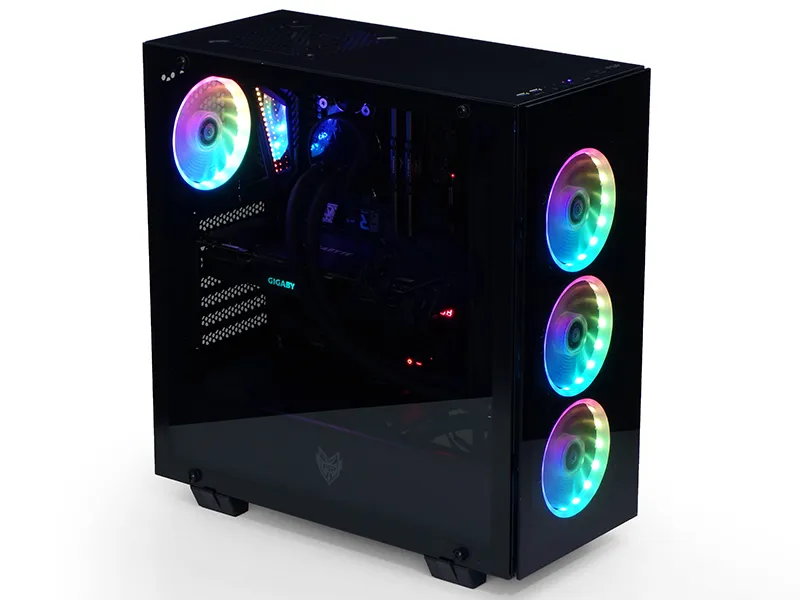Glassy Chassis: FSP CMT510 ATX Case Review
Hardware Installation & Performance Evaluation
Contents
That’s not an SFX adapter! The CMT510 includes a PSII (full ATX) form factor mounting plate that fits an oversized hole on the back, which allows the power supply to be inserted from the back. While such a mounting plate is not too uncommon (our motherboard test platform has one), the lack of space to insert it from any other direction is something we’ve not seen in a few years.

With only two USB3 ports and no Gen2 interfaces, front-panel connectors are reduced to the standard button/LED assortment, front-panel audio, and a single two-port Gen1 interface.

External card brackets allow case manufacturers to use a piece of folded-over sheet metal from the back of the case to support the top of a graphics card, rather than use an insert that needs to be large enough to fit both the I/O shield and the slot brackets. This cost-saving measure is typically applied to sub-$80 cases, though we’ve cringed to see it appear on some high-end models as well. Our best estimate is that the insert adds between $3 and $5 to the manufacturing cost of a case.

The biggest problem with external card brackets is that, as shown in the other case’s video, the smallish slot obstructs the graphics card’s inner tabs from sliding past any motherboard obstructions. So we created a video of a card being inserted into this case, only to find that the back was flexible enough to allow our card to slide in after minimal bumping around.
| System Configuration | |
| CPU | AMD Ryzen 7 3700X: 8 cores/ 16 threads, 32MB L3 Cache O/C to 4.20 GHz (42x 100 MHz) at 1.3625 V Core |
| CPU Cooler | Fractal Design Celsius S24 2x 120mm Closed-Loop Liquid Cooler |
| Motherboard | MSI X570 Ace: AMD X570, Socket AM4 |
| RAM | PNY XLR8 MD32GK2D4320016XR: 2x 16GB DDR4-3200 T-Force Vulcan Z TLZGD416G3200HC16CDC0 DDR4-3200 |
| Graphics | Gigabyte GeForce RTX 2070 Gaming OC 8G: GeForce RTX 2070 1815 MHz GPU, GDDR6-14000, Maximum Fan When Listed |
| Hard Drives | Toshiba OCZ RD400 256GB NVMe SSD |
| Sound | Integrated HD Audio |
| Network | Integrated Gigabit Networking |
| Power | Thermaltake Toughpower GF1 850W: Fully modular, 80Plus Gold |
| Test Configuration | |
| Load Software | AIDA 64 Engineer Version 6.00.5100, Stress CPU, FPU, Cache, GPU |
| H/W Monitoring | HWiNFO64 v6.28-4200 |
| SPL Monitoring | Galaxy CM-140 SPL Meter: Tested at 1/4 m, corrected to 1 m (-12 dB) |
Since the CMT510 has only a single top-panel fan mount that’s too close to the motherboard to support even a single-fan radiator, we had to mount our 2x120mm closed-loop cooler to its front panel. Not willing to leave out any of the case’s original fans, we reversed our cooler’s stock fans to match the flow direction of the CMT510’s intake fans, and performed a “sandwich” installation as shown.

Keeping our cooler’s fans on the inside (pull) and the case’s original fans on the outside (push) of our radiator gave us a very nice appearance, despite any performance discrepancies. It’s not like we were going to install an air cooler and retest all the other cases, after all.

Benchmark Results
Since the CMT510 lacked room for our closed-loop cooler in our typical top-mount location, we’re expecting our voltage regulator to run a little warmer than it has when installed that way in other cases. The CPU could potentially run a little cooler as well, since there’s an extra set of fans cooling it in a push-pull configuration.




Unfortunately, the CMT510 doesn’t appear to flow enough air to get that theoretical CPU cooling advantage, and things look even worse at all other test points. The voltage regulator, chipset and GPU gradually increase to a 14° deficit compared to the next closest competitor. And it’s not as though our office was 14° warmer: It was 1° cooler, and the results shown include that 1° adjustment.

Glass panels do a wonderful job of reflecting noise back towards the source, and the fairly-low 36db SPL is what we’d expect when a fan-filled case is partially muffled by glass. Unfortunately, it was not quiet enough to offset its poor cooling performance, being only the second quietest case in the group and less than 3db quieter than the noisiest sample.
| FSP CMT510 | |
| Pros: | Cons: |
|
|
| The Verdict: | |
| For a low price, the CMT510 can provide lower-end system builders with a higher-class appearance. | |
Get it at Amazon

(click for availability)
